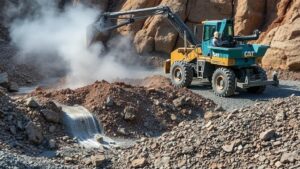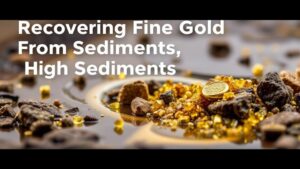Testing for Gold Concentrations in Narrow Tributaries
Testing for Gold Concentrations in Narrow Tributaries
The exploration and testing for gold concentrations in narrow tributaries is a critical aspect of mineral resource assessment. As global demand for gold continues to rise, understanding the methodologies and technologies used in these environments becomes increasingly important. This article will explore the techniques for effectively testing these delicate ecosystems while maintaining environmental integrity.
The Importance of Narrow Tributaries in Gold Exploration
Narrow tributaries, often overlooked in gold exploration, can be vital indicators of mineral deposits. e small water bodies can carry sediments that contain traces of gold, providing clues to larger deposits upstream. According to a study by the U.S. Geological Survey, placer deposits in tributaries account for a significant portion of historical gold recovery, especially in areas previously mined.
Sample Collection Techniques
Gathering samples from narrow tributaries involves several techniques that must be employed carefully to ensure accuracy and minimal environmental disturbance.
- Silt Sampling: Collecting fine sediments sitting at the bottom of streams can yield concentrated gold particles. Methods such as a hand trowel or small dredging equipment are often used.
- Core Sampling: Utilizing a corer to extract sediment profiles can help identify gold-rich layers within the substrate, allowing for a more targeted exploration.
Analytical Methods for Gold Concentration
Once samples are collected, various analytical techniques are employed to measure gold concentrations accurately.
- Fire Assay: This traditional method involves melting the sample with lead oxide and other fluxes, allowing for the collection of gold into a bead that can be measured precisely.
- Inductively Coupled Plasma Mass Spectrometry (ICP-MS): This advanced technique provides high sensitivity and specificity, enabling the detection of gold at trace levels within sediment samples.
Environmental Considerations
Testing for gold concentrations must align with environmental standards to protect the fragile ecosystems of tributaries. Potential impacts include:
- Sediment Disruption: Careless sampling can lead to significant changes in sediment flow, affecting aquatic life.
- Pollution Risks: Use of chemicals during testing can contaminate water sources if not managed correctly.
Adherence to local regulations and guidelines, such as those provided by the Environmental Protection Agency (EPA), is essential to mitigate these risks. Engaging with local communities and stakeholders is also important to maintain transparency and trust.
Real-World Applications and Case Studies
Several successful case studies illustrate effective gold testing in narrow tributaries. In the Yukon territory, for example, targeted sampling of tributaries using both core samples and fire assay techniques led to the discovery of a previously unknown gold vein, yielding over 10,000 ounces of gold annually. This illustrates the importance of selecting appropriate methodologies tailored to the specific environment.
Actionable Takeaways
For those engaged in gold exploration, here are key takeaways for testing gold concentrations in narrow tributaries:
- Prioritize sediment sampling and core sampling techniques to uncover gold deposits effectively.
- Use advanced analytical methods, such as ICP-MS, for precise measurement of gold concentrations.
- Adhere to environmental regulations to minimize ecological impacts during testing.
- Engage with local communities to foster cooperation and mitigate any potential conflicts.
By applying these strategies, geologists and prospectors can enhance their exploration efforts while preserving the integrity of these vital ecosystems.



